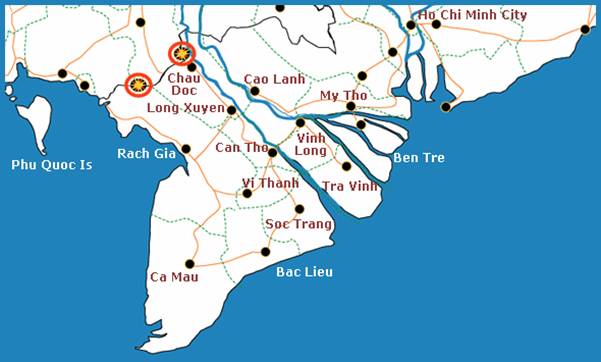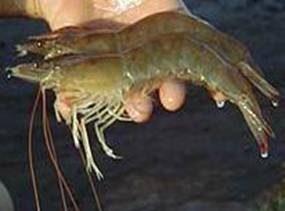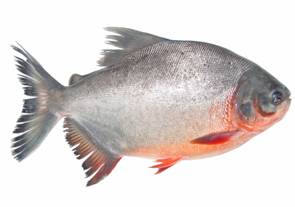STUDY ON MIGRATION OF MARINE ORGANISMS INTO INLAND AND CHANGES OF BIODIVERSITY AT WATER BODIES IN MEKONG DELTA FOR EVALUATION OF SALINE INTRUSION OF SEA LEVEL RISE
*Institute of Environmental Sciences and Development (VESDEC)
**Faculty of Environment and Labor Safety – Ton Duc Thang University
1. Introduction
The migration of marine organisms into inland canals is a common phenomenon in the hydrosphere (including both the temperate and tropical zones). This is a phenomenon that the aquatic fauna migrate into the inland waters both temporary and endless times. The best migration organisms have usually hard shells or covers because these species can tolerate the changes of water environment and regulate the osmotic pressure to adapt well with the high saline fluctuation.
This report considered theories and applications of the migration of marine organisms into inland and the changes of biodiversity at water bodies in the Mekong Delta to evaluate the impacts of saline intrusion of sea level rise. These results will help the appropriate authorities to suggest the approaches for saline control of sea level rise.
2. Methodology
The migration of marine organisms into inland canals in the Mekong Delta depends on the rate and magnitude of changes in two critical environmental variables: (1) slope of along rivers and, and (2) amplitude of tides. These factors regulate the migration of these species, both directly and indirectly (Pham Van Mien, 2002).
Based on the analyses of available data combined with the monitoring of aquatic flora and fauna in the Mekong Delta from 2001 to now, the evaluation of saline intrusion of sea level rise was suggested.
3. Results and Discussion
3.1. Migration of marine organisms into inland canals in the Mekong Delta
Based on the freshwater adaptability of marine organisms, Dang Ngoc Thanh (1974) classified these species by 4 groups: (1) the species migrated temporary into fresh or brackish waters for reproduction, growth and return such as sardines, hilsa herrings, sea crabs, shrimps of Penaeidae,…; (2) the marine species adapted well with braskish water like polychaetes and crustaceans of Nephthydidae, Nereidae, Spionidae, Sabellidae, Gammaridae, Corophiidae, Corallanidae, Anthuridae, Apseudidae; (3) the marine species adapted well with fresh water as Nephthydidae, Nereidae, Gammaridae, Corophiidae; and (4) the relictus species separated to sea water for very longtime such as Caobangia billeti (Polychaeta).
The migration of marine organisms into inland had been studied in the North Vietnam (Dang Ngoc Thanh, 1967). In the South Vietnam, these issues had been implemented in various researches (Pham Van Mien, 1986; Tu Thanh Dung, 1986; Pham Anh Duc et al, 2011; Pham Van Mien et al, 2001, 2002, 2006, 2011; MRC, 2006, 2008, 2009a, 2009b, 2010). The migration of marine organisms into inland in the Mekong Delta was higher too much than this in the Red River Delta. This expressed through the abundance of species richness and densities, and the distance of inland migration, ex. many polychaet and crustacean species of marine origin appeared in the Mekong River and tributaries near to Phnom Penh in Cambodia. Additionally, the marine origin species of benthic macroinvertebrate these belonged to Nephthydidae, Nereidae, Sabellidae (Polychaeta); Amphipoda, Isopoda, Tanaidacea (Crustacea) were dominant both taxa richness and densities in the freshwater canals (S < 1‰) inside of the Eas Sea and the Thailand Bay (Pham Van Mien, 1986; Pham Van Mien, 2002; Pham Van Mien et al, 2011).
The salinity intrusion in the Mekong Delta made the transition ecosystems between freshwater and marine. These ecological conditions have changed following tide cycles and seasons. Of which, the species composition of zooplankton these migrated into inland included Acartiella sinensis (Acartidae); Schmackeria bulbosa, Pseudodiaptomus beieri (Pseudodiaptomidae); Limnoithona sinensis (Oithonidae); Eodiaptomus draconisgnivomi, Neodiaptomus malaindosinensis (Diaptomidae); Thermocyclops hyalinus, Mesocyclops leuckarti (Cyclopidae)… The benthic macroinvertebrate included Nephthys polybranchia (Nephthydidae); Namalycastis abiuma (Nereidae); Polydora sp. (Spionidae); Bispira polymorpha (Sabellidae); Grandidiella lignorum, Kamaka sp., Corophium sp. (Corophiidae); Tachaea sp., Cyathura truncata (Isopoda); Apseudes vietnamensis (Tanaidacea)…
Pham Van Mien (2002) also provided the basic characteristics of aquatic flora and fauna in the Mekong Delta, as follows:
− For zoogeography, the aquatic flora and fauna in the Mekong Delta (including Mekong Delta both Vietnam and Cambodia) belonged to the China-India Region, the India-Malaysia Subregion and the Zoogeography Province of Mekong (including three regions of Lao PRD, East Truong Son, Cambodia-South Vietnam).
− The Mekong Delta in Vietnam had the relation of the aquatic flora and fauna to the Mekong Delta in Cambodia closely. The marine origin organisms have distributed the whole of the Mekong Delta.
The studied results showed that there were two critical environmental variables of (1) slope of along rivers, and (2) amplitude of tides, which have regulated the migration of marine organisms, both directly and indirectly.
The Mekong is the world’s 10th-longest river and the 7th-longest in Asia. Its estimated length is 4,909 km, and it drains an area of 795,000 km2, discharging 475 km3 of water annually (Wikipedia, 2011). The Mekong Delta in Vietnam (Figure 1) have the characteristics of flat terrain and low slope (altitude: 0.5 – 2.0 m), it tends to decrease 1 cm height for 1 km length to downstream. The tides of the East Sea in the coastal areas and estuaries fluctuate from 3.0 – 4.2 m. That why the tides in the Mekong River can come up to Kratie – Cambodia (Pham Van Mien, 2002). The migration of marine organisms into inland have brought the various distribution of freshwater and marine flora and fauna these increased the biodiversity of inland waters in Mekong Delta, as followed: the high taxa richness, the high quality fisheries resources (sea crabs, shrimp of Penaeidae,…), and the natural food for fisheries resources.

Figure 1. Map of the Mekong Delta
Based on the analyses of species composition, density, dominant species, specific species, biodiversity, bio-indices for aquatic flora and fauna,… the assessment of negative and positive effects on socio-economic activities were considered. From these, the approaches for minimizing of climate change impacts were suggested.
Each marine species that migrates into inland can adapt well the different saline concentrations. These species seem to be the bio-indicators for the saline intrusion and the inland migration in the Mekong Delta. They could be used for the assessment of saline intrusion such as Acartiidae, Pseudodiaptomidae, Oithonidae (Zooplankton); Nephthydidae, Nereidae, Sabellidae, Gammaridae, Corophiidae, Corollanidae, Anthuridae, Apseudidae (Benthic Macroinverbrate)… (MRC, 2006, 2008, 2009a, 2009b, 2010; Pham Van Mien, 1986, 2002; Pham Van Mien et all, 2011) (Figure 2).
Nephthys polybranchia Namalycastis abiuma
Grandidierella lignorum Tachaea sp.
Figure 2. Some species used for the assessment of saline intrusion and inland migration
3.2. Changes of biodiversity of aquatic flora and fauna in the Mekong Delta
In recent 30 years, there have been many great changes of the biodiversity of inland waters in the Mekong Delta because of various reasons such as deforestation for aquaculture, dikes and dams, constructions of saline control, constructions of flood control and residential development, exotic species or introduced species (Ctenopharyngodon idella, Hypophthalmichthys nobilis, Hypophthalmichthys harmandi, Hypostomus sp., Colossoma brachypomum, Litopenaeus vannamei, Trachemys scripta elegans, Pomacea canaliculata,…)… (Figure 3).
Operation of saline control sluice Mangrove deforestation for aquacultureOperation of saline control sluice Mangrove deforestation for aquaculture


Litopenaeus vannamei Colossoma brachypomum
Figure 3. Some of impacts caused by human activities on biodiversity of inland waters in the Mekong Delta
This report identified the introduced species and the marine organisms these changed the biodiversity of aquatic ecosystems in the Mekong Delta, as bellows:
− In many areas, the distribution of marine origin organisms and exotic species or introduced species have been expanded, and the freshwater species have been narrowed;
− While these phenomenon happened in opposite conditions at some areas. However, it was very difficult for the freshwater species these could expand to estuaries directions. The data analyses in many years showed that although there were the low salinities (S: 1 – 2‰) in the main rainy season but only few species of zooplankton and non species of benthic macro in vertebrate could distributed in estuaries of the Mekong Delta.
For future, there are two key reasons these have a change for the biodiversity of aquatic flora and fauna at water bodies in the Mekong Delta continuously (taxa richness and densities of marine species tend to increase in community structure), as follows:
− The impacts of sea level rise on the aquatic ecosystems have been increased;
− The effects of aquaculture expansion (salt water species) into inland have been developed.
4. Conclussion
The theories and the applications of the migration of marine organisms into inland and the changes of biodiversity at the water bodies in the Mekong Delta for the evaluation of saline intrusion of sea level rise were considered. These results will help to suggest the approaches for saline control of sea level rise.
REFERENCES
[1] Dang Ngoc Thanh. Aquatic Flora and Fauna in Inland Waters of North Vietnam. PhD Thesis. Moscow (1967).
[2] Dang Ngoc Thanh. General Hydrobiology. Publisher of University and College. Hanoi (1974).
[3] Mekong River Commission. Biomonitoring of the lower Mekong River and Selected Tributaries, – Benthic Macroinvertebrates. Technical Paper No. 13 (ISSN: 1683-1489). Mekong River Commission. Vientiane (2006).
[4] Mekong River Commission. Biomonitoring of the lower Mekong River and Selected Tributaries 2004 - 2007. Technical Paper No. 20 (ISSN: 1683-1489). Mekong River Commission. Vientiane (2008).
[5] Mekong River Commission. Report on the 2006 Biomonitoring Survey of the Lower Mekong River and Selected Tributaries. Technical Paper No. 20 (ISSN: 1683-1489). Mekong River Commission. Vientiane (2009a)